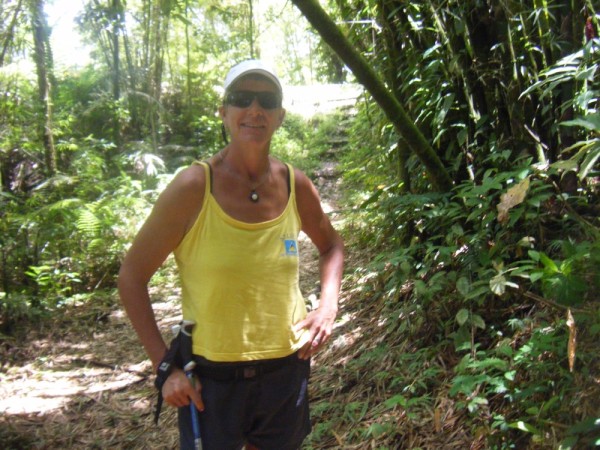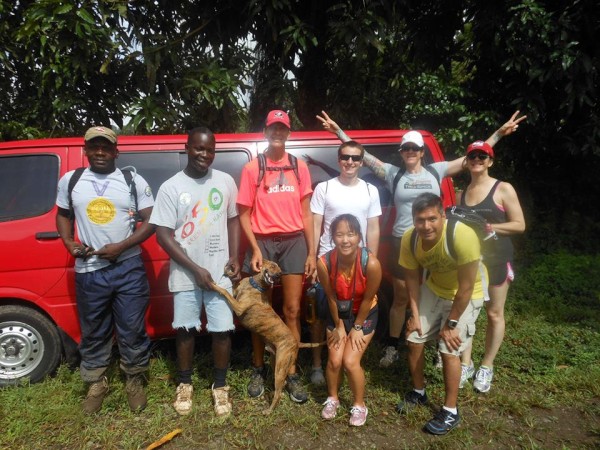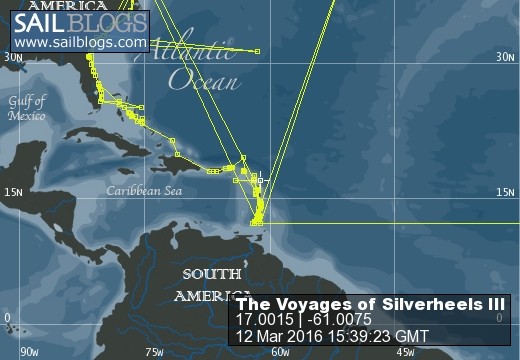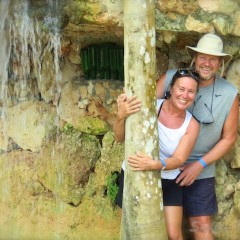
The Voyages of s/v Silverheels III
...a virtual ship's logbook, and some thoughtful (unabashed?) reflections on our sea-going experiences.
04 November 2017 | Somewhere in the Eastern Caribbean
18 October 2017 | Le Marin, Martinique in the French West Indies
25 January 2017 | Gosier, Guadeloupe
19 January 2017 | Le Gosier, Guadeloupe
19 January 2017 | Le Gosier, Guadeloupe
19 January 2017 | St Pierre, Martinique
06 January 2017
01 January 2017 | Fort Du France, Martinique
28 December 2016 | Grand Anse d'Arlet, Martinique
24 December 2016
14 November 2016 | St Anne, Martinique
06 October 2016 | St Anne, Martinique
04 October 2016
20 July 2016 | Rodney Bay, St Lucia
15 June 2016
15 June 2016
13 June 2016
13 June 2016 | Grand Anse d'Arlets
13 June 2016 | Grand Anse d'Arlets
09 May 2016 | Deshaies, Guadeloupe
Cabrits, a Good Place for History Buffs and Hikers.... Excellent if You are BOTH
13 January 2014 | Portsmouth, Dominica
Lynn

Prince Rupert Bay, when it was still known by the Kalinago or Carib name of "Ou-You-Hao" was a busy port of call for ships arriving in the Caribbean. In fact, according to Dominican historian, Dr. Lennox Honeychurch, it was often the first port of call for most ships of every nationality. It was still home to the indigenous Kalinago (or Carib) people, and they traded fruit and provisions with the weary sailors after their Atlantic crossings. Fresh water was plentiful, timber was easily accessible for repairs, and the natives very friendly. Sailors even let goats loose on the peninsula to the north of the bay as a source of fresh meat. An altering of the Spanish word for goat by the Kalinago gave the point its' name, Cabrits.
Over many years, and much European history overflowing to the Caribbean, a fortification was built, first by the English, then by the French, then the English again when they got the island back for the last time. At one time there were about 800-1000 people living and working at the fort. By 1854, the garrison locked it up and left it behind. In time, the bush grew back up around it, with the Ficus tree also entwining itself into the walls as well.
By the 1970's there was some renewed interest in the area, both historically and for the trails that criss-crossed the valley and twin hills of the peninsula, and by 1983, major efforts were put into restoring the site as a historical landmark. After 30 years, donations from various nations, and a lot of hard work, Fort Shirley (named for the same Shirley of Shirley Heights in Antigua) has been transformed. The Fort has been completely renovated, and access to the more far flung batteries and lookout points have been reclaimed from the bush. Cannon have been found and remounted, and the site turned into a hiker's and historian's treasure.
Ken and I have spent some time now, walking the trails and looking at the artifacts. The first day we went on our own, the second day with the crew of 'Callisto' (Jonathon, they are anchored right behind us!). The second visit was a little more interesting, as I had finished reading Dr. Honeychurch's book "Dominca's Cabrits and Prince Rupert's Bay" which is all about the history of this area. If you visit the area, and are interested in local history, I strongly recommend seeking out his books about Dominican history; it is obvious he loves his country, and he has an easy and engaging writing style.
While the fort has been renovated, the outposts have been cleared but not restored. The Commandant's Quarters have many of the walls in disrepair, but the Ficus trees that intertwine into the walls create an incredible art exhibit of Nature's finest designs. Same, too, at the battery by the Parade Ground and Officers' Quarters. The trees have woven themselves in and out of the masonry in a lover's embrace with Man's creation, to remove one component would not be possible without destroying the other part, in as close to a symbiotic relationship that an inorganic structure could have. Breathtakingly gorgeous. In combination with the noontime sun filtering in through the leaves, no artist could create a scene so striking with any medium that they may choose to use.
We plan to return a couple of times, since we got the weekly pass for the National Parks. Whether it is to go to the museum, or to the natural art show, or to get the heart rate up with a walk, or all three, it is a wonderful place to visit.
Go to our Picasa Web Album (link on the right) to check out our pictures. Captions and comments will come eventually.
Over many years, and much European history overflowing to the Caribbean, a fortification was built, first by the English, then by the French, then the English again when they got the island back for the last time. At one time there were about 800-1000 people living and working at the fort. By 1854, the garrison locked it up and left it behind. In time, the bush grew back up around it, with the Ficus tree also entwining itself into the walls as well.
By the 1970's there was some renewed interest in the area, both historically and for the trails that criss-crossed the valley and twin hills of the peninsula, and by 1983, major efforts were put into restoring the site as a historical landmark. After 30 years, donations from various nations, and a lot of hard work, Fort Shirley (named for the same Shirley of Shirley Heights in Antigua) has been transformed. The Fort has been completely renovated, and access to the more far flung batteries and lookout points have been reclaimed from the bush. Cannon have been found and remounted, and the site turned into a hiker's and historian's treasure.
Ken and I have spent some time now, walking the trails and looking at the artifacts. The first day we went on our own, the second day with the crew of 'Callisto' (Jonathon, they are anchored right behind us!). The second visit was a little more interesting, as I had finished reading Dr. Honeychurch's book "Dominca's Cabrits and Prince Rupert's Bay" which is all about the history of this area. If you visit the area, and are interested in local history, I strongly recommend seeking out his books about Dominican history; it is obvious he loves his country, and he has an easy and engaging writing style.
While the fort has been renovated, the outposts have been cleared but not restored. The Commandant's Quarters have many of the walls in disrepair, but the Ficus trees that intertwine into the walls create an incredible art exhibit of Nature's finest designs. Same, too, at the battery by the Parade Ground and Officers' Quarters. The trees have woven themselves in and out of the masonry in a lover's embrace with Man's creation, to remove one component would not be possible without destroying the other part, in as close to a symbiotic relationship that an inorganic structure could have. Breathtakingly gorgeous. In combination with the noontime sun filtering in through the leaves, no artist could create a scene so striking with any medium that they may choose to use.
We plan to return a couple of times, since we got the weekly pass for the National Parks. Whether it is to go to the museum, or to the natural art show, or to get the heart rate up with a walk, or all three, it is a wonderful place to visit.
Go to our Picasa Web Album (link on the right) to check out our pictures. Captions and comments will come eventually.
Comments
| Vessel Name: | Silverheels III |
| Vessel Make/Model: | Hinterhoeller, Niagara 35 Mk1 (1979) |
| Hailing Port: | Toronto |
| Crew: | Lynn Kaak and Ken Goodings |
| About: | After five summers and winters living on our boat in Toronto Harbour, we've exchanged those cold Canadian winters for Caribbean sunshine. "Nowadays, we have ice in our drinks, not under the boat." |
| Extra: |
The completely biased and unabashed musings from the crew of Silverheels III
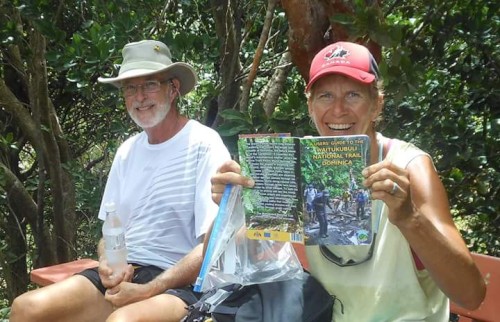
Who: Lynn Kaak and Ken Goodings
Port: Toronto














